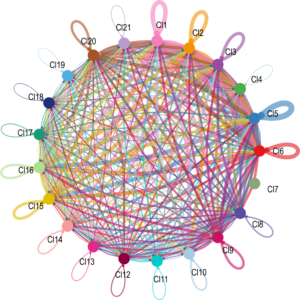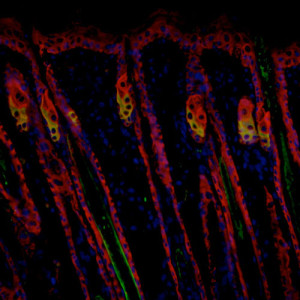Research focus
Our research is focusing on the identification and molecular characterisation of stem cell intrinsic mechanisms that guarantee normal stem cell function required maintaining and regenerating epithelial tissues. We further investigate how abnormal stem cell responses contribute to disease formation, including cancer initiation and progression.

Stem cell-specific surveillance mechanisms
Recent studies have indicated that epidermal stem cells, which are crucial for maintaining skin homeostasis, respond differently to stress and DNA damage compared to their rapidly cycling progeny. Hair follicle bulge stem cells possess stem cell-specific surveillance mechanisms regulating the DNA damage response. In particular, multipotent hair follicle stem cells are more resistant to DNA-damage-induced cell death, which has been linked to a higher expression of pro-survival factors and attenuated activation of tumour suppressor molecules, such as p53. We are investigating the relevance of these stem cell-specific gatekeeper functions for the process of disease initiation. More specifically, we decipher the molecular network of gatekeeper activation and responses and explore mechanisms to control crucial stem cell-specific surveillance mechanisms to prevent tumour formation.

Determination of stem cell fate and function
Mammalian skin, the protective covering of the body, consists of specialised epithelial compartments, including the interfollicular epidermis and its appendages, the hair follicles, sebaceous and sweat glands. The formation of epidermal appendages involves an ordered set of developmental processes beginning with expansion of undifferentiated stem and progenitor cells followed by lineage commitment of progenitor cells and the subsequent differentiation of their progeny. Our research aims to unravel how lineage specification of stem cells is regulated during tissue morphogenesis, a process that is crucial for the establishment of proper tissue morphology and function.
The lab has a long-standing interest in identifying basic cellular and molecular mechanisms governing the process of cell lineage specification in mammalian skin. In particular, our work dissects the function of canonical Wnt/β-catenin/Lef1 signalling activity and the role of a Hedgehog-Gli2 signalling axis in tissue homeostasis and cancer.
To address these important issues we use a combination of state of the art molecular and cellular biology techniques, primary cell culture (human and and mouse), conditional mouse models, confocal microscopy as well as high-throughput genomic approaches.


